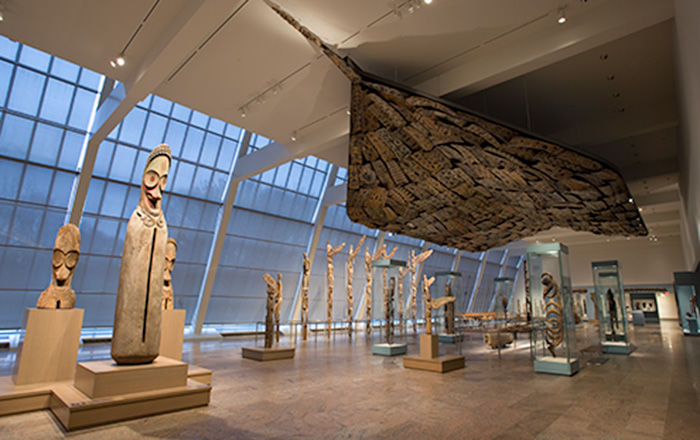Textile Ornament
Not on view
Silver ornaments, such as this small fish, were designed to adorn elite garments in the ancient Andes. Metalsmiths in the Kingdom of Chimor (also known as the Chimú culture), a late prehispanic period polity on Peru’s North Coast, were particularly highly regarded by the Inca, who conquered the kingdom in the late 15th century. Chimú metalsmiths worked with various metals, including copper, gold, silver, and their alloys, often hammering them into thin sheets that were then cut and embossed. Maritime creatures were a favored subject, and they were often pierced twice, for secure attachment to a garment or another cloth.
These ornaments were designed to embellish luxury garments produced in weaving workshops throughout the kingdom. In earlier periods on the North Coast, metal ornaments were often attached to cloth or other objects at a single point, allowing them to move as the wearer moved. An ornament such as the present example, with a perforation near the eye and the tail, suggests that Chimú artists preferred to arrest this movement, integrating it into the garment itself, suggesting that it was less something added to the base of the woven textile, but as inherent to its finalized structure, perhaps doubling the symbolic power of the garment.
Maximillion A. Alegria, Adrienne Arsht Intern, 2024
References and Further Reading
King, Heidi, Luis Jaime Castillo Butters, and Paloma Carcedo de Mufarech. Rain of the Moon: Silver in Ancient Peru. New York, New Haven and London: The Metropolitan Museum of Art, 2000.
Pillsbury, Joanne, Timothy Potts, and Kim N. Richter. Golden Kingdoms: Luxury Arts in the Ancient Americas. Los Angeles: Getty Publications, 2017.
Rowe, Ann Pollard. Costumes and Featherwork of the Lords of Chimor. Washington DC: The Textile Museum, 1984.
Scher, Sarahh, and Billie Follensbee. Dressing the Part. Gainesville: University of Florida Press, 2017, pp.1-13.
This image cannot be enlarged, viewed at full screen, or downloaded.

